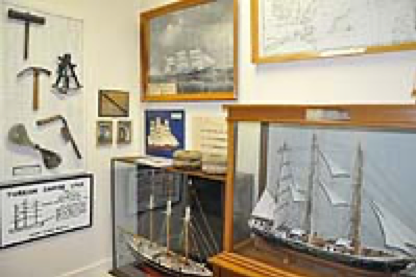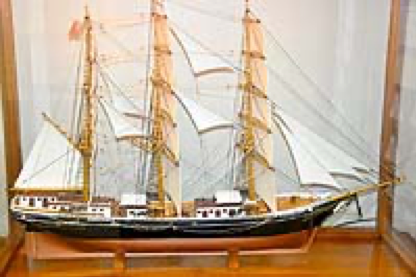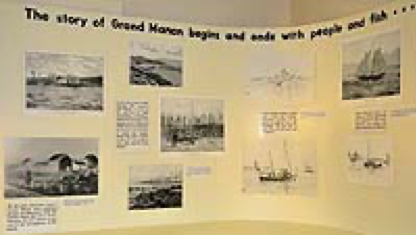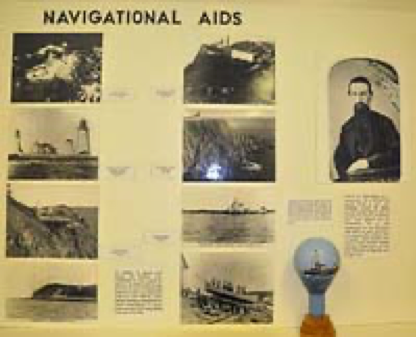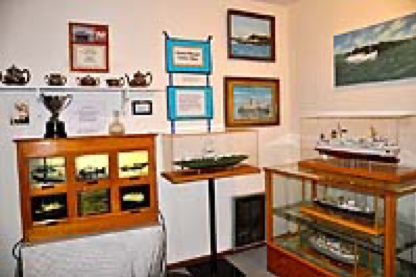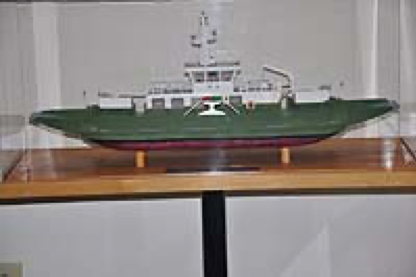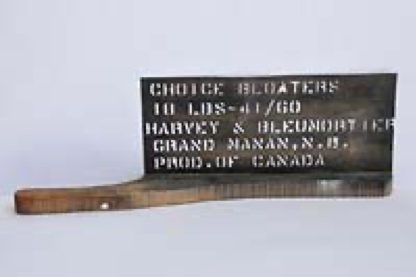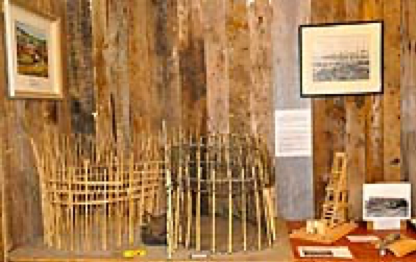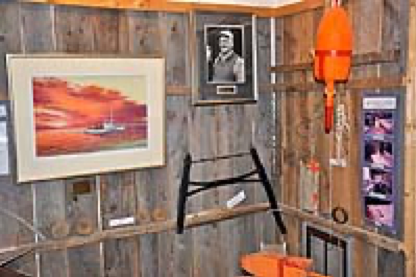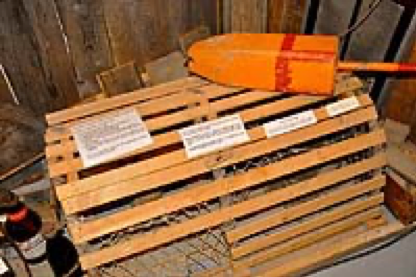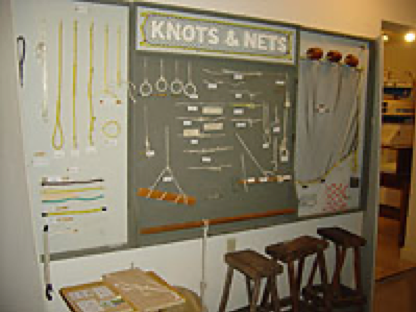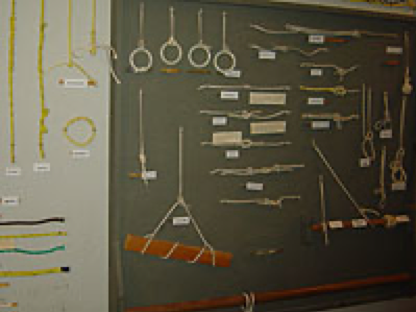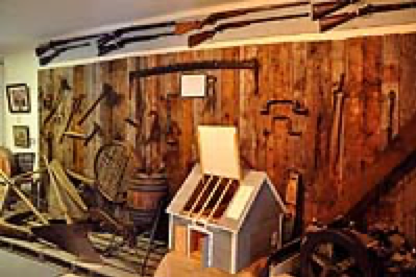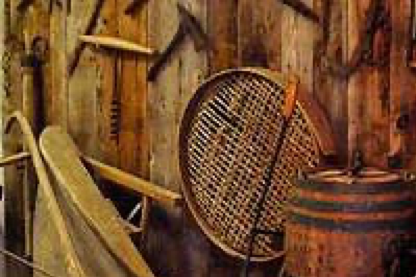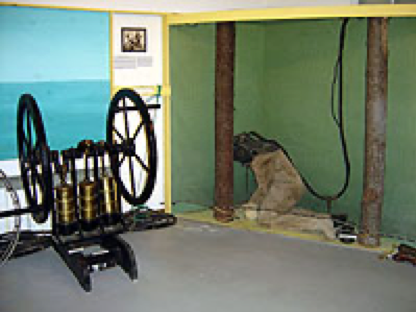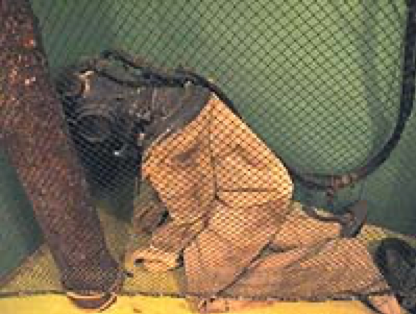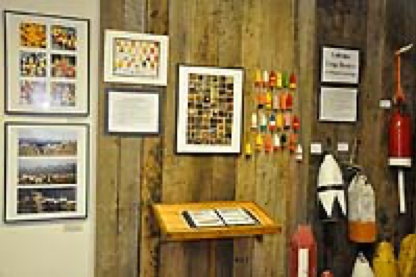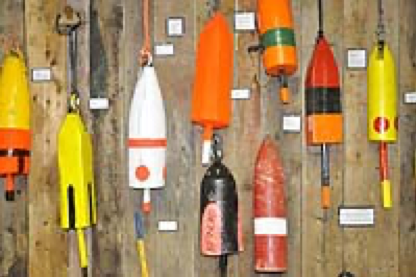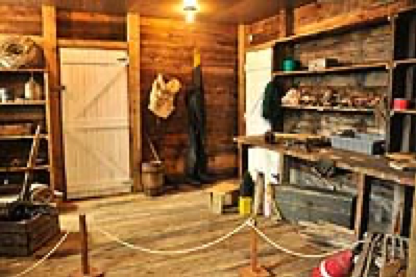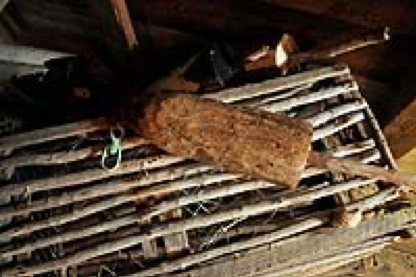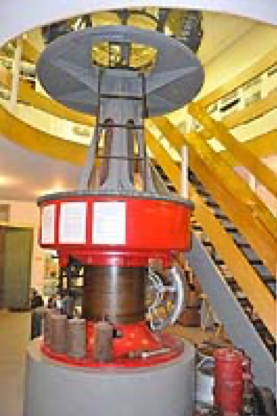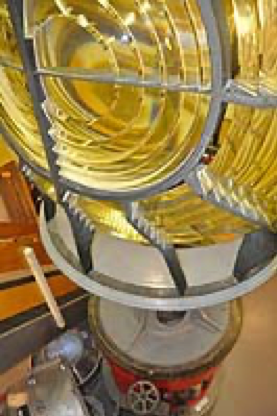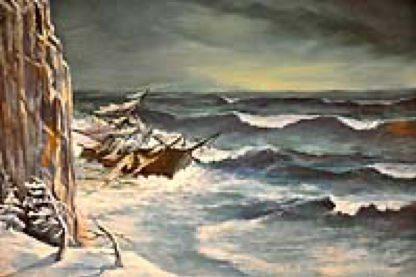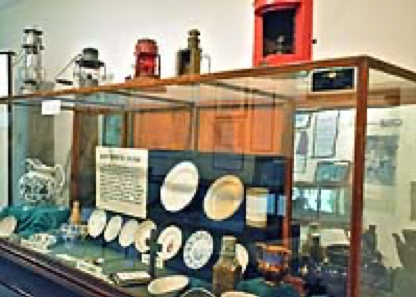Walter B. McLaughlin Marine Gallery
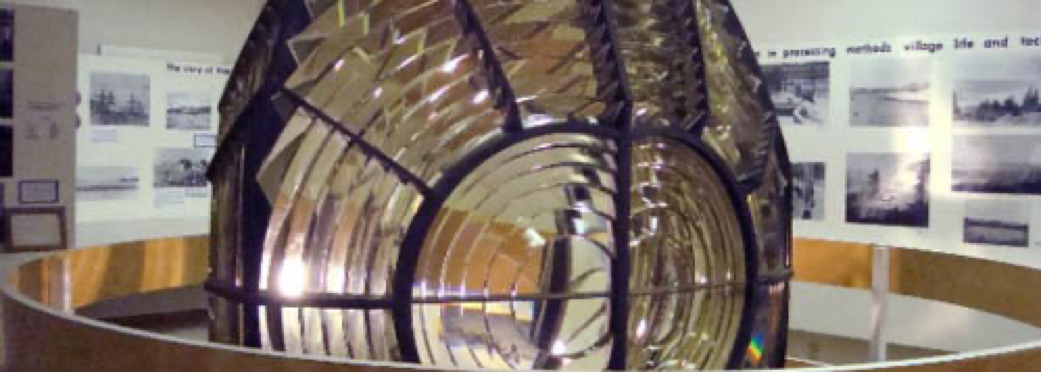
The two floor gallery includes the history of ship building, lighthouses and some of their keepers, ferries that have served the island, and the history of the first settlers of the Island. Commercial fishing from purse seining, weir fishing, scallop and ground fish dragging, and lobster fishing are all explained with informational model displays. The gallery has items from the many vessels that have been lost at the sea. This gallery also houses the spectacular Second Order Fresnel Lighthouse lens from Gannet Rock Lighthouse, and tells the story of a Grand Mananer who, because of his ingenuity, helped to win WWII.
The Gannet Rock Lighthouse, Fresnel Light
The two story light is so large the Gallery was built around it. The lens was originally installed on Gannet Rock in 1905.
The development of lenses which refract or bend light revolutionized lighthouse technology. Petroleum vapour under pressure was burned on a mantle producing 85,000 candlepower - making the Gannet Rock Fresnel lens the second most powerful light in the world when it was in operation.
New in 2014: Video Display Console: NFB Film "Down East Vol. I". which has a 10 minute Fishery of Grand Manan segment.
History of Grand Manan Ferries, including Lady White Head Ferry model, donated in 2012 by Ted Corbett, who oversaw the construction of the ferry and made the model.
Click to edit text. What do visitors to your website need to know about you and your business?
Snooks the Diver Exhibit - The role of the diver was important in the maintenance of weirs and the salvaging of wrecks. This type of hard helmet diving suit is no longer used. Modern divers use scuba gear which allows them more independence and freedom of movement. “Snooks” the diver began diving at an early age, around 1917, doing a lot of weir work and various other tasks around the island where he was a familiar sight. (The bicentennial quilt on display has a square dedicated to Snooks in his hard helmet diving suit.)
The large air compressor pump on display sat on the deck of the boat from which the diver descended. Men had to pump the air down through a long hose, and the “tender”, as he was called, took care of the air hose, the life line, and also was responsible for sending down tools needed for repair work. The diver would request a tool by tugging on the line, but later years had a telephone to talk on.
In 1958 Snooks had a heart attack and was forced into retirement, but his son, Erling Green, took over the job for the next 11 years. Father and son dove for a combined total of 52 years.
The base of the Fresnel light where the petroleum va pour was stored and burned. The extreme weight of the Fresnel lens required the "industrial" strength base for the light.


